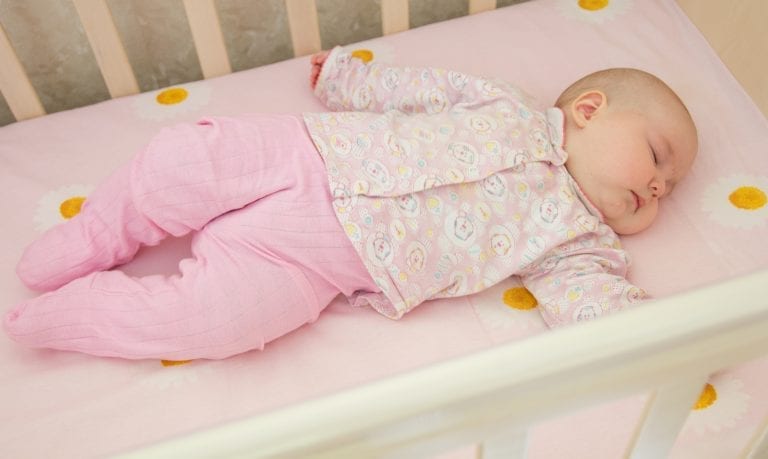Infant Sleep Safety: Babies Need Their Own Space
The safest place for your baby to sleep is in their own crib or bassinet, free of any bumpers or blankets, or loose bedding or toys that could impede their breathing. With so many cribs, bassinets, bedside sleepers and other products out there, it can be super confusing figuring out what’s safe and what’s not.
The Consumer Product Safety Commission (CPSC) is the governmental organization dedicated to consumer product safety and standards. CPSP.gov is a great place to check for recalls on specific baby products, though not all products have been evaluated or have safety standards.
Second, the American Academy of Pediatrics (AAP) offers general guidelines on crib and “sleep space” safety, which is a great place to start, so we’ll summarize their recommendations here.
When deciding where your baby will sleep, keep the following in mind:
- Place baby on their back in a sleep product that meets CPSC safety standards for sleep (cribs, bassinets, pack-n-plays, or bedside sleepers)
- Use a firm mattress that fits the crib (no gaps) with a tight-fitting sheet
- The crib should be empty except for baby, which means no blankets, pillows, stuffed animals or bumper pads
- Dress baby in a sleeper or wearable blanket when needed for warmth
- In-bed sleepers are not recommended; these small portable devices are placed on an adult bed but there are no safety standards for these devices and there is reason for concern that babies could accidentally get covered, overheated, or rolled onto by a sleeping adult
- The safest place for baby to sleep is alone in an infant bed–never on a couch, sofa, or armchair. These are the very riskiest places for baby, and where accidental suffocation is most likely to happen
- Bring your baby into your bed to breastfeed/chestfeed—just put them in their crib when they’ve finished nursing
- DO NOT USE inclined sleepers—which are sometimes called pods, nests, docks, loungers, rockers, or nappers as these devices can be dangerous. There have been many reports of injuries and deaths associated with these products, and the AAP is urging they be removed from the infant marketplace
- Keep sleep products out of baby’s crib—that includes pillows, breathing (apnea) monitors, positioners, and hammocks that may even be marketed as safety items. These haven’t been studied enough to recommend them, and some items, like positioners and pillows, are just plain dangerous
- Move baby to their crib if they fall sleep in their car seat or stroller, or other baby gear not designed for sleep. These items should not be used for routine sleep
Finally, a shout-out about where to put your crib: Researchers have noted that infants who sleep in the same room with their parents, but not in the same bed, have a decreased risk of Sudden Infant Death Syndrome (SIDS). The AAP recommends “room-sharing” for at least 6 months–and a year is even better!
Do also go to our SAFE SLEEP section for many more sleep related articles






Comments are closed.